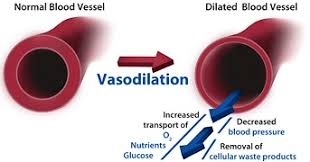Many health clubs (not all of them) offer contracts with attractive monthly rates because they fully expect members not to use their health clubs. They are right. 70% of members don't regularly use their health clubs. The average renewal rate hovers around 30%. No doubt, the clubs offer a great deal for those who use it, however for most people health club memberships are not a good option.
There are a number of problems with many of these health club contracts:
They often give you the hard sell to sign the contract. You have to sign that day to get the special yearly rate. I told one salesperson that I wanted to think it over and come back another day. She told me I had to act now. She said, “We want decisive members.” I walked out.
The automatic bank draft continues even if you don’t use the gym.
Stopping the bank draft will cost you. There can be as much as a $200 processing fee to stop it.
The fine print can be tricky. You might decide to bear the burden of the monthly bank draft until the end of the contract only to find out that the month after your contact expires contract dues are still be withdrawn from your bank account. When you ask why they inform you, “Oh yes, your yearly contract ended and your contract stipulates that you will be automatically switched to a month-to-month payment”.
They permanently close or change hands often. I worked at three different health club locations over a 15-year period. During that period, ownership changed hands collectively six times at those locations.
There is a simple solution to avoiding the problems that many health club contracts present. Do not sign them. Instead find an exercise program that is:
Pay as you go. You can stop at anytime – for vacations, holidays, change in employment status, sickness, whimsy, or even pandemics – and you can restart again anytime.
Designed to produce the most results in the least amount of time spent in the gym. Your marginal return for time spent will be higher, and over all your cost will be lower. You will have more time to enjoy physical activities outside the gym, and that won't cost you a dime.
One that is produces real, measurable results. Those results serve as motivation to stick to the program.
Offers a program you cannot do on your own*. If you can do it on your own why bother joining.
Involves having regularly scheduled appointments. You are more likely to go if it is on the books. A set weekly appointment for one half hour is a commitment that most people can keep. You will improve each week. Imagine what your health could be like ten years from now with that regular commitment.
One that does not have a cancellation fee if you don’t show.
One that offers no-obligation complimentary sessions to see if the program is suited for you and is something you want to pursue.
We offer such a program at our Austin personal training location.
*At Kelly Personal Training we have state-of-the-art MedX equipment and experienced trainers that work with those who:
Don’t know where to start. Which exercises? How often? How long? How many times? You can spend a lot of time and incur a lot of injuries figuring out what is safe and optimal.
Are overcoming injuries such as back operations, knee, hip, and shoulder replacements. We have the specialized equipment and expertise for it.
Dealing with medical conditions such as stroke, MS, or Parkinson’s. We have been working with those clients for 19 years now.
Are already in good condition. With the equipment and the experienced trainers taking care of every little detail the clients can safely work unimpeded to a very deep fatigue that stimulates further improvement and get that endorphin high to the degree you just can’t get on your own.
Request a complimentary first session at Kelly Personal Training
Click here to schedule a session to try it yourself
We operate by appointment. Before you stop by please call us at 512-964-8787
























